Mujhey Chaltey Jaana Hai, Bas Chaltey Jaana – Gulzar
Some years ago, I was lamenting the general “lack of interest in today’s younger generation in old classic Hindi film music” to a friend. She countered, “no; my children listen to the music of the 70s and so on”. I said, “that’s because you are a singer yourself “. She countered”, no. They called me up once and said that old songs are profound and meaningful. Specifically, the younger one likes Gulzar and his songs; she started from Musafir hoon yaaron from Parichay and has gone back to earlier songs of that era”.
Suitably chastised, I could only be amazed that Gulzar could make inroads into today’s generation and interest them in his songs and films. Indeed, Gulzar has fans across generations in his illustrious sixty-year-long career as Writer, Producer, Director, Lyricist, Poet, and Author. The statistics look genuinely impressive over the sixty years he has been at work.
Sampooran Singh Kalra was born in Dina in undivided India in 1934. As with everyone who scales peaks of adulation, Gulzar’s journey was not necessarily an easy one. Partition brought its set of miseries. Ultimately, Gulzar found himself in Mumbai, working in motor garages and doing odd jobs. Meetings with many writers of the Progressive Writers Association soon resulted in encouragement by lyricist Shailendra and offers to be an Assistant Director. His first significant song as a lyricist was for Bimal Roy’s Bandini with the superlative Mora Gora rang lei le.
From Bandini till his first independent venture, Gulzar mainly worked as a lyricist and writer. An early association with Hrishikesh Mukherjee resulted in some of the finest collaborations between the duo, most notably in Anand, Aashirwad, the hysterically funny Chupke Chupke where Gulzar’s writing talent literally overshadowed every aspect of the film due to its use of “shudh Hindi” used by both the protagonist and the object of his prank.
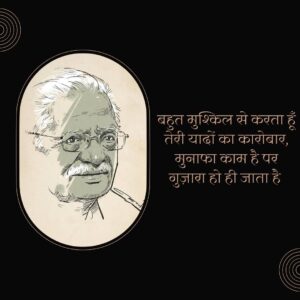 However, that’s rushing ahead; in 1971, Gulzar directed his first film Mere Apne. Based on the Bengali film Aponjon, the story that reflected the disaffection of unemployed youth in West Bengal was easily transplanted to some (unknown) Hindi-speaking town. It is where, two rival gangs clashed, fuelled by greedy politicians. In those days, everything was well in the candy-floss atmosphere of Hindi films. They lived in their own fantasy land and never mirrored the complex realities. Mere Apne was the first to show that all was not well in India. In the early 1970s, burdened by poverty, inflation, social stigmas, greedy politicians, and middle-class greed. Using Meena Kumari as an anchor was a masterstroke. It brought in both the “older” generation and the new generation that liked the emerging stars, most of whom were from the Film Institute, Pune.
However, that’s rushing ahead; in 1971, Gulzar directed his first film Mere Apne. Based on the Bengali film Aponjon, the story that reflected the disaffection of unemployed youth in West Bengal was easily transplanted to some (unknown) Hindi-speaking town. It is where, two rival gangs clashed, fuelled by greedy politicians. In those days, everything was well in the candy-floss atmosphere of Hindi films. They lived in their own fantasy land and never mirrored the complex realities. Mere Apne was the first to show that all was not well in India. In the early 1970s, burdened by poverty, inflation, social stigmas, greedy politicians, and middle-class greed. Using Meena Kumari as an anchor was a masterstroke. It brought in both the “older” generation and the new generation that liked the emerging stars, most of whom were from the Film Institute, Pune.
In Mere Apne, Gulzar’s writing and lyrics came into full play. Gulzar had already learned from master Bimal Roy how to integrate music to make a statement or forward the story. Perhaps the three songs are unnecessary for such a serious theme of disaffected youth. Yet Salil Choudhury’s music and Gulzar’s profound lyrics gave us a window as to what we could expect in Gulzar’s films.
Lata Mangeshkar’s Roz akeli jaaye was not picturized, and even today, the film doesn’t have the song. However, the two other songs are incredible in their unique ways. Gang leader Shyam bumps into the woman he had dreamt of marrying but refrains from hitting her husband and then remembers the good times with her through the song “Koi hota jisko apna“. Salil Choudhury’s composition takes full advantage of Kishore’s range as Kishore goes from low, mid, and high range and then effortlessly back to mid and low. However, with the song “Haal chaal theekh thaak hai”, Gulzar probably wrote one of the most profound all-time political satires.
Though the conditions were 1971, the words “Roz koi meeting, Roz koi bhaashan, bhaashan pe raashan nahi hai yahan” are timeless and more relevant in the 21st century. As we now have many such “bhaashans” coming directly into our living rooms, thanks to the power of television.
Mere Apne’s success brought in its wake two films in 1972. Koshish was a first-of-its-kind film in Hindi cinema and perhaps in India. The struggles of a deaf-and-dumb couple made engaging cinema. Also, they brought attention to an aspect of life that had never been covered before. Blind characters were familiar in Hindi cinema but not deaf and dumb. Koshish brought the formidable talent of Sanjeev Kumar to the fore. Gulzar and Sanjeev Kumar had both an enduring professional association and a lifelong friendship. There was no scope for songs in the film – yet two songs were somehow fitted in but were never popular.
Parichay, however, was a musical treat through and through. Loosely based on The Sound of Music, Parichay told the story of a teacher being asked to teach the grandchildren of a strict old man, but he has other ideas. As time goes by, the eldest girl is drawn to the teacher. Another lifelong association started with R. D. Burman, with this film. Pancham gave some incredible music with – Mitwa boley meethe bain by Bhupendra, Musafir hoon yaaron by Kishore, Saare ke saare by Kishore and Asha, Beeti na bitai raina by Lata and Bhupendra.
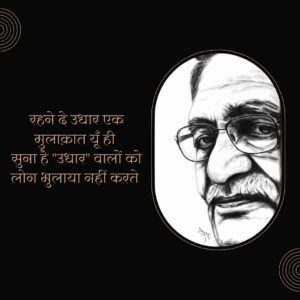 Achanak was an experiment in filmmaking. Yet, the 1973 film was well accepted by both critics and the masses. Based on a short story by K.A. Abbas, (and not the Nanavati murder case as is widely accepted), the film showcased Gulzar’s writing and directorial skill. Deftly weaving the story from the present to the past and back till we finally face the present and the consequences of the past. The morality of killing was debated subtly without resorting to any histrionics or melodrama.
Achanak was an experiment in filmmaking. Yet, the 1973 film was well accepted by both critics and the masses. Based on a short story by K.A. Abbas, (and not the Nanavati murder case as is widely accepted), the film showcased Gulzar’s writing and directorial skill. Deftly weaving the story from the present to the past and back till we finally face the present and the consequences of the past. The morality of killing was debated subtly without resorting to any histrionics or melodrama.
Aandhi, a 1975 release, had its disproportionate share of controversies. The film was banned by some over-eager acolytes of the then Prime Minister, thinking it mirrored her life and belittled her. The infamous 1975 Emergency was on. After the initial screenings in some theatres, it was banned but rereleased after lifting the Emergency in 1977.
The tale of a couple who have grown apart over the years and now reminisce about their past had its own lyrical pace. It showed Gulzar as a director who understood human emotions and displayed them in a sensitive, non-judgemental, humane manner. In the film, no one is good or bad – the couple is just torn apart by their respective thoughts and emotions. This peep into relationships is something that Gulzar would repeatedly visit over the years. Once again, R.D. Burman rose to the occasion and delivered three wonderful memorable Kishore-Lata duets – “Is mode se jaate hain“, “Tum aa gaye ho“, “Tere bina zindagi se koi“. The last was not “sung” onscreen but was ‘voiced’ in the background, with the actors only emoting onscreen. In front of these three formidable duets, the satirical “Salaam keejiye” sank into oblivion.
1975 was a high tide for Gulzar with two more releases in succession Khushboo and Mausam. Khushboo was based on a Bengali novel and told the lyrical village story of a woman Kusum who considers Vrindavan her husband, even though he has moved away. Circumstances bring him back, and in the process, the flame is rekindled – or is it? Pancham gave a lovely purely acoustic-themed album with “O Majhi re” by Kishore, “Ghar jaayegi” and “Bechara dil kya karey” by Asha “Do nainon me aansun bharey hain“. Again, every song told a story as Kusum grew close to Vrindavan’s child and was torn apart by both sides’ egos.
Mausam was more about redemption and a quest. Foreign returned Dr. Amar is searching for his long-lost love Chanda and is shocked to find a lookalike streetwalker whom he wants to turn away from prostitution. The music was scored by Madan Mohan. Dil dhoondtha hai as a solo and duet was a stroke of genius by Madan Mohan, who passed away around the film’s release. The story took precedence over the music – yet the song Dil dhoondhta hai was more popular. The duet version told the budding romance, whereas the solo version was about the aged doctor’s quest for Chanda. The film won Sharmila Tagore the National Award but was only moderately popular.
Gulzar turned producer in 1977 with two sensitive portrayals of life. In a way, Kinara was also about the redemption of a wealthy architect Inder who inadvertently caused the death of a well-known dancer Aarti’s fiancée. Each song is well integrated into the film as Inder’s journey towards redemption continues. R.D. Burman came out with a genuinely varied album. From the Raag Bhairavi based “Meethe bol boley” through the minimalist “Ek hi khwab” to “Ab ke na sawan barse” capped by Kishore’s sonorous “Jaane kya sochkar nahi guzra“, the songs were superb and well accepted by the critics and the masses.
With Kitaab, Gulzar examined the world through a child’s eye and looked at adult foibles to an uncomprehending child Babla. Babla is going through the typical schoolboy pangs, doesn’t find peace at home, and is uninterested in studies. He has an imaginary view of a perfect world which he seeks to explore by running away from his family. Ticketless train travel, a school for beggars, and so on soon give him the idea that life is not ideal outside his cloistered world.
For a ‘child’s tale”, there was again not much scope for music. Still, R.D. Burman rose magnificently to the occasion with a unique “unplugged” song. No melodic instruments were used and there was only a rhythm track. It is said that Pancham actually got a school bench into the recording studio and banged out the rhythm on it. “Aa aa ee ee masterji ki aayi chitti“ reminds us of the ‘free periods’ we spent in classes, banging on the benches and creating mayhem. Babla’s train goes through an area where the engine driver dreams of his lover and praises her beauty with “Dhanno ki aankhon mein“, which saw the first use of an electronic flanger!
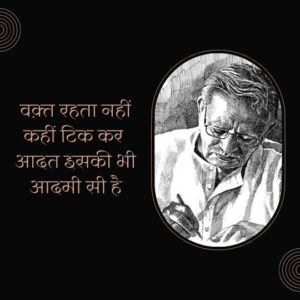 1978 saw the release of Ghar, one of the finest ever onscreen depictions of a troubled relationship between a couple. Gulzar took over direction after the director Manik Chatterjee had a car accident. The film dealt with the topic of recovery from rape and is one of the most sensitive onscreen portrayals of the subject. The woman’s journey starts with social interactions with neighbors. Then begins the social ostracism, snide comments hinting that “she” must have invited it. The inner conflicts between the couple, and the woman’s self-loathing. The film deserved far better and was ahead of its time. Once again, the R. D. Burman – Gulzar combo gave us some eternal numbers such as “Tere bina jiya jaaye na“, “Aaj kal paaon zameen par“, “Aapki aankhon mein“, and the crowning glory of a hesitant husband trying to reignite the relationship through “Phir wahi raat hai“.
1978 saw the release of Ghar, one of the finest ever onscreen depictions of a troubled relationship between a couple. Gulzar took over direction after the director Manik Chatterjee had a car accident. The film dealt with the topic of recovery from rape and is one of the most sensitive onscreen portrayals of the subject. The woman’s journey starts with social interactions with neighbors. Then begins the social ostracism, snide comments hinting that “she” must have invited it. The inner conflicts between the couple, and the woman’s self-loathing. The film deserved far better and was ahead of its time. Once again, the R. D. Burman – Gulzar combo gave us some eternal numbers such as “Tere bina jiya jaaye na“, “Aaj kal paaon zameen par“, “Aapki aankhon mein“, and the crowning glory of a hesitant husband trying to reignite the relationship through “Phir wahi raat hai“.
Meera was released in 1979, and as per the pre-publicity release, Gulzar decided to concentrate on the character and her devotion rather than the “miracle” aspects of Meera. Lavishly mounted, the film’s music was given by Pandit Ravi Shankar. He took the somewhat surprising decision to use Vani Jairam for all the well-known Meera bhajans in the movie. With the audience gravitating towards feeble stories with tons of violence, the film didn’t do well. The songs were not well known except among connoisseurs.
Though he continued writing lyrics, dialogues, and screenplays for other films, his next major directorial venture was a “mirth-quake”. Angoor, a 1982 release, has passed into the annals as one of the finest comedies that relied on wit and dialogue rather than slapstick humor which has been Hindi film’s idea of comedy. Do Dooni Char is an adaption of William Shakespeare’s Comedy of Errors, Do Dooni Char, early in 1968. Still, Gulzar easily topped it with his witty dialogues and situations.
Once again, there was no scope for music; yet, R. D. Burman rose to the occasion with two numbers by Asha and a somewhat hallucinogenic tribute to the old classic “Preetam aan milo”. Sanjeev Kumar and Deven Varma played the master-servant duo who outdid each other. The nagging wife (Moushumi Chatterjee) reminds her husband of his promise to get her a necklace with “Hothon pe beeti baat aayi hai“. Though incidental to the story, the song is the precursor to the comic mayhem that will follow as the wife repeatedly hints at a necklace during the song.
1982 also saw another release that remains one of Gulzar’s most under-rated films (and the writer’s personal favorite), Namkeen. Gulzar told the story of four women. In an all-women household who have to cope with their poverty and a truck driver guest. He set everyone thinking about relationships (his strong point), breakdowns in relationships, misunderstandings, and plain melancholy. The women are poor but morally strong as they do odd jobs. Yet there is a need for escape from the struggle. Each woman’s character is a sum of her experiences and the matriarch. Her three daughters want to move on to better things. The matriarch’s past prevents her from letting go of her daughters, each of whom sees hope in the arrival of the truck driver. Unknowingly the truck driver likes the eldest daughter, who wants nothing of it and rejects him.
Chance – that one word which probably defines every human – is what the film is all about. This is filmmaking at its finest; sadly, this lyrical film about missed chances faded into oblivion in a climate of increasingly violent films. “Raah pe rehte hain” sums up the life of the truck driver and his relationship with the women who have left him only with memories.
Every Auteur knows that it is always difficult to make films that define one’s true feelings about any topic. In the struggle between commerce and art, commerce usually wins. It took another five years before Gulzar came out with one of the most nuanced depictions of a love triangle with Ijaazat in 1987. No one resents anyone in the film; even the “other woman” is painted not in evil colors but as a woman full of emotion as she sings “Mera kuchh saaman tumhare paas pada hai“.
The R. D. Burman-Asha Bhosale combo was in full flow in this film with three more solos – “Katra katra milti hai“, “Khaali haath shaam aayee hai“. “Chhoti si kahaani se” was, however, picturized as the “title music” as there was no suitable “song situation”. Libaas was completed in 1988 but never theatrically released. This was obviously due to a lack of distributor interest and the bold topic of extramarital affairs.
Lekin in 1990 was an unusual “ghost story” – a favorite topic with many filmmakers over the years. Yet who or what is the ghost? Is she real or a spirit? Something from the past? These and many other questions ponder us throughout the film. Since it was produced by Lata Mangeshkar herself, the music by her brother Hridaynath Mangeshkar was also of the highest quality. “Kesariya baalma“, “Surmayi shaam“, and the pure classical “Jhoothe Naina bole” contributed to the overall atmosphere of nostalgia and mystery.
In 1996, Gulzar directed one of the most delicate depictions of the Punjab Terrorism with Maachis. For glorifying the terrorist side, not the Government led anti-terror forces Gulzar has been accused repeatedly. He denied the accusation and said it was time to heal the wounds and tell the story from all sides. The film re-iterated the old moral of “once in, never out”. The terrorists have not only lost their past (Chhod aaye hum woh galiyaan) but also their souls (paani paani re khaari paani re). The songs, however, are totally unnecessary in such a serious film, though they did tell everyone’s story. Newcomer Vishal Bhardwaj, a Gulzar protégé, rose to the occasion with the (eternally) popular “Chappa chappa charkha chale” and other compositions. It was highly successful in Punjab. The population could come to terms with the recent past and an almost cinematic expiation of their guilt.
His last full-length film Hu Tu Tu in 1999 is reminiscent of his first venture Mere Apne. It depicted ordinary well-off citizens losing faith in the system and turning violently against the establishment they were part of. The statement is clear – in pursuit of the “good things in life”, have we lost our overall moral sense and purpose and abused the system? Is it all Means to an End, or The End is more important than The Means?
Is it the old saying Yatha Raja Thatha Praja – an uncaring electorate electing equally uncaring leaders and anyone who says anything against them is not only ostracised but also violently abused by The System? In this case, the music comes more as a hindrance to the story than forwarding it. The lukewarm box office response didn’t do much to the film’s fortunes. However, the theme was – as always with any Gulzar film – powerful.
No films released to date though Gulzar has written many popular songs. Which is a pity. Someone apprenticed under the great Bimal Roy associated with Hrishikesh Mukherjee in the dialogue and screenplay department. Set out his own mark as a delicate filmmaker, Gulzar has set the bar high for sensitive depictions of relations. Whether he makes another film or not in the coming years is something that we can only speculate about.
We can but take solace in the fact that he gave us some multifaceted films and perhaps helped all of us to unravel the mystery of our life’s journey with the eternal lyrics: Musafir hoon yaaron, Na ghar hai na thikana, Mujhe chaltey jaana hai, Bas chaltey jaana …


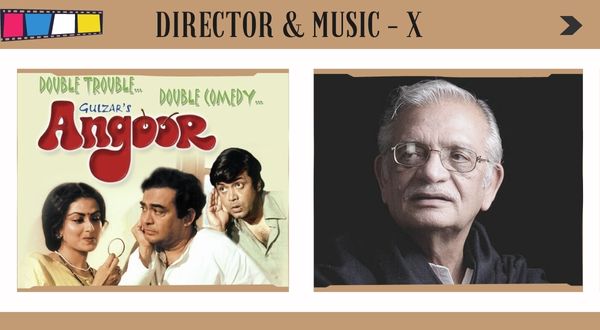
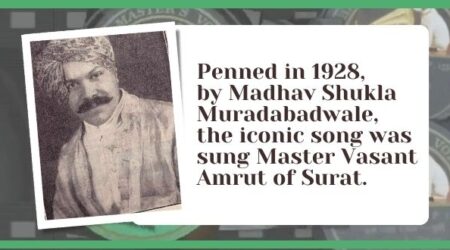
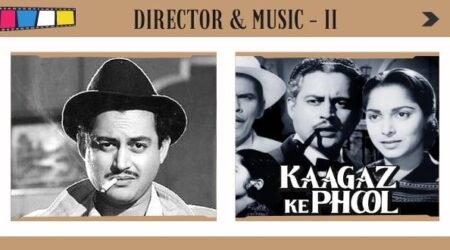

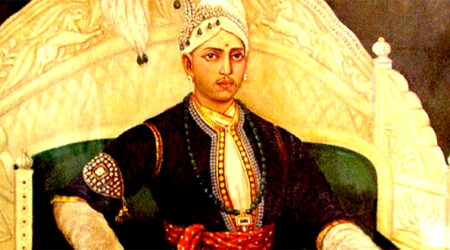

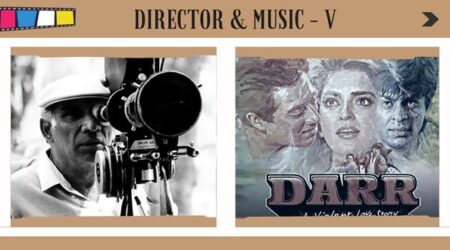
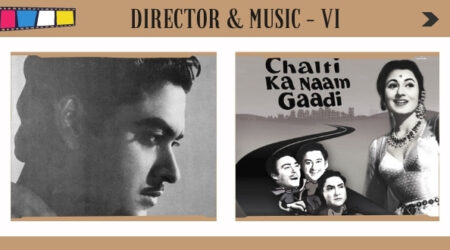
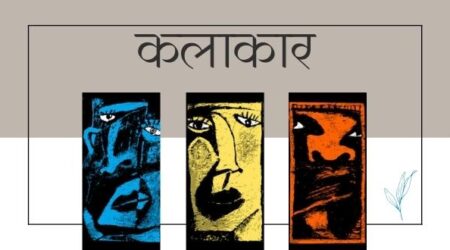
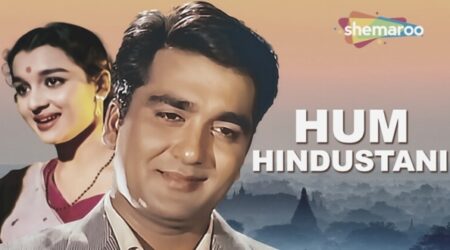
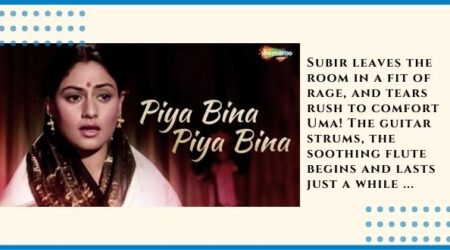

Comments (6)
You have depicted the grand panorama of films that touched our hearts. Aandhi & Ijazat were my favourites. Thanks for this nostalgic feeling of the past era!
Another beautifully crafted piece by Ramesh! What I love about these retrospective pieces is that while we get a supremely comprehensive look at the work of an artist, we also have a ready compendium of films and masterpieces we can go back to at our own leisure. Glad to have a better understanding of Gulzar Sahab’s unparalleled contribution to Indian music and cinema.
Beautifully explained. Enjoyed thoroughly.
Very well written word to word… Ramesh… Great write up???
Expecting more such interesting articles..
A writer’s tribute to a poet and an artist! A delight to read this chronological exposition on Gulzar’s work!
Wonderful Ramesh!
Very nice and beautiful,….??
Sir you are the great ??